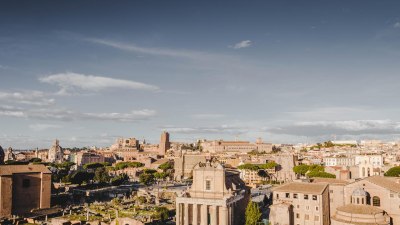How Travel Can Bring Ancient Myths and Legends to Life
Explore how travel can transform ancient myths and legends into vibrant experiences that resonate today.

Travel has an incredible ability to not only open our eyes to new cultures but also to breathe life into ancient myths and legends. These stories, often rooted in the history and traditions of a place, can provide a deeper understanding of the landscapes we explore, the people we meet, and the customs we encounter. In this article, we will delve into how travel can serve as a bridge between the present and the fascinating tales of yore.
The Power of Place
Each destination is imbued with stories that have shaped its identity. The ruins of ancient civilizations, the majestic mountains, and the serene coasts all whisper tales of heroes, gods, and mythical beasts. For instance, a traveler wandering through the ancient city of Athens may feel the weight of the legends surrounding the Acropolis—home to Athena and a testament to the power of Greek mythology. By physically being in these places, travelers can connect with the stories that have been passed down through generations.
Experiencing Local Folklore
Many destinations pride themselves on their rich folklore. Engaging with local culture can unveil a treasure trove of stories. Festivals, traditional performances, and storytelling sessions often highlight these tales. For example, visiting Ireland opens the door to bustling markets where you'll hear about leprechauns and fairies, enhancing the magical experience of exploring the Emerald Isle. Participating in local celebrations allows travelers to not just observe but also feel the emotional weight of these legends.
Guided Tours with a Twist
Many travel companies now offer guided tours that focus explicitly on the myths and legends of a region. These tours often feature knowledgeable guides who weave the stories into the fabric of the tour, making the experiences more immersive. Imagine standing in the shadow of Dracula’s castle in Romania while a guide recounts the chilling tales of this iconic figure. Such narratives add depth to the historical context, transforming a simple sightseeing trip into a thrilling adventure.
Art and Literature as a Reflection of Myths
Art and literature often serve as vessels for myths, preserving them for future generations. When traveling, visitors can experience the works inspired by local legends. Galleries and museums frequently showcase art that illustrates folklore. For instance, a visit to the Louvre in Paris not only allows for viewing timeless art pieces but also understanding the myths that inspired them. Additionally, literature—whether it be Homer’s epics in Greece or the stories of Aesop—reflects the cultural identity shaped by legends, and exploring these texts can enhance the travel experience.
Mystical Landscapes
Many myths are closely tied to specific landscapes that are often crafted as characters themselves in the tales. The mystical Isle of Skye in Scotland is famous for its breathtaking scenery and the tales of the fairies that supposedly inhabit the lands. As travelers traverse the rugged landscapes, they can almost hear the echoes of the past, bringing the stories to life in their imagination. Nature has a way of creating an atmosphere that feels almost magical, allowing visitors to become part of the narrative.
Food, Rituals, and Myths
Food is another integral aspect of culture closely tied to myths and legends. The dishes tell the stories of the land and its people, often linked to myths. For instance, tasting traditional Swedish meatballs brings to mind the Viking sagas, while sampling Greek moussaka evokes the tales of gods feasting in Mount Olympus. Participating in local rituals, such as a tea ceremony in Japan, can further evoke the legends intertwined with the customs surrounding the beverage. Such experiences allow travelers to savor the essence of the stories tied to culinary traditions.
Modern Interpretations of Ancient Legends
In the contemporary world, myths and legends continue to inspire art, film, and literature. Traveling to locations linked to these stories allows visitors to see modern interpretations and adaptations firsthand. For example, the popularity of the Norse mythology in films and literature has led to increased interest in Scandinavia, where visitors can explore sites associated with Odin and Thor. Engaging with modern narrations while walking in the lands where the originals emerged adds a unique dimension to the travel experience.
Connecting with Locals
One of the most enriching aspects of travel is the opportunity to connect with locals who can share their unique perspectives on the myths and legends of their culture. Engaging with storytellers, historians, and artists allows travelers to delve deeper into the roots of these narratives. Personal stories often bring a sense of authenticity that is universal in its appeal. Such connections can foster a greater appreciation and understanding of the cultural values embedded within these tales.
Traveling as a Narrative
When we travel, our own stories begin to intertwine with the myths and legends of the places we visit. The experiences we gather weave new chapters into the age-old narratives. Much like the legends that have endured through time, our travel experiences shape our identities and perspectives. By embracing the stories of the past, we can create a tapestry of memories that resonate within us, transforming travel into a lived experience that connects us to both past and present.
Seeking the Unseen
Part of the adventure of uncovering myths and legends lies in seeking out the lesser-known tales. Every region is filled with folk stories that might not be as widely recognized but are equally compelling. Engaging with local historians or exploring off-the-beaten-path attractions can reveal hidden gems that add richness to understanding a culture. For instance, while visiting remote villages in Greece, discovering local legends about hidden treasures or heroic relics enhances both the experience and understanding of the region’s heritage.
A Journey of Reflection
Traveling through landscapes steeped in myth encourages introspection. Many travelers find that engaging with these stories leads to personal revelations and insights. The themes of love, bravery, and sacrifice found in legends often resonate on a personal level, prompting reflection on one's journey. In this way, the experience transcends mere tourism, becoming an exploration of our own lives through the lens of ancient tales.
Preserving Legends Through Travel
Travel not only brings myths and legends to life but also plays a crucial role in their preservation. By engaging with local cultures and supporting traditions, travelers contribute to the longevity of these stories. Ecotourism and responsible travel practices help ensure that communities benefit from sharing their rich heritage. As travelers become invested in the storytelling culture, they foster an environment where legends continue to thrive, passed down through generations.
Weaving the Tapestry of Travel and Tales
In conclusion, travel is more than just visiting new places; it is about experiencing the stories that have shaped those places. By immersing ourselves in local myths and legends, we can build connections, discover new perspectives, and foster appreciation for diverse cultures. Each journey becomes a blend of past and present, where ancient tales breathe life into our modern travels. Let your travels guide you to the heart of these narratives and witness the magic of ancient myths come alive.











